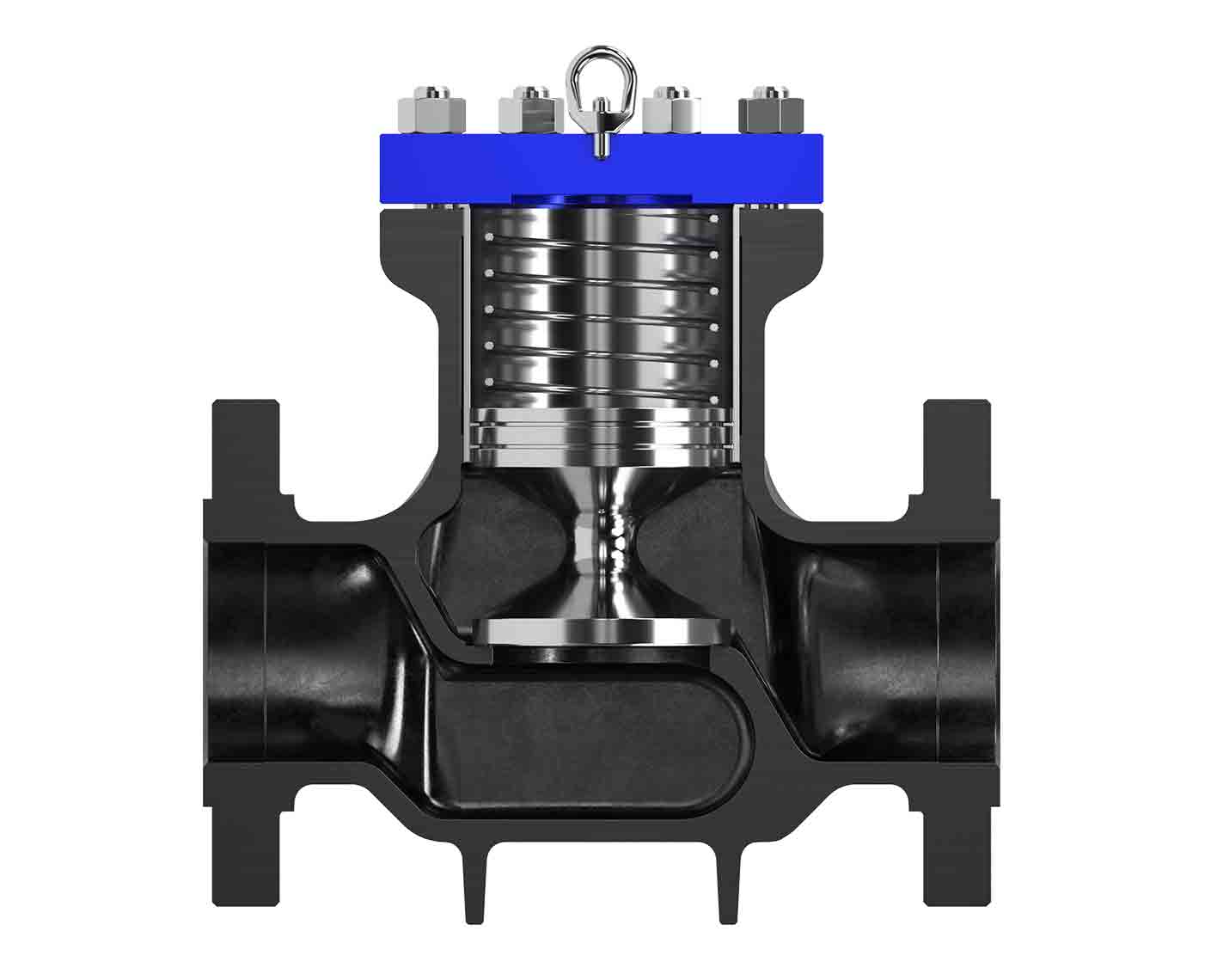Brochure Piston-Style TOM WHEATLEY Check Valves
Protecting pumps and compressors from damaging backflow.
Check valve

Piston-style Tom Wheatley™ check valves protect your pumps and compressors from damaging backflow. The piston check is a simple, dependable design, and these field-proven valves have been in service for decades.
Because of their unique nonslam design and durability, these check valves have provided years of uninterrupted service downstream from reciprocating pumps and compressors, and in other applications where conventional check valve designs would be subjected to excessive wear. They are also suitable for renewable fuels service.
Piston-style Tom Wheatley check valves are especially beneficial where pulsating flow is present. The valve's top-entry design enables easy access and replacement of valve internal parts with reduced downtime.
In the absence of differential pressure across the valve piston, gravity and spring force cause the piston to rest in the closed position. Pressure applied at the upstream end of the valve lifts the piston off its seat and allows flow. As the piston moves up, gas in the chamber above compresses and its pressure increases, preventing further travel. This pressure is relieved by actuation of a spring-loaded ball check valve installed in the piston, and the piston continues its upward travel. As flow varies, the piston floats up and down within a cylinder.
Should flow cease, gravity and spring force lower the piston. This downward travel causes a vacuum to develop above the piston, inhibiting further downward movement. An orifice installed at the top of the piston permits pressure equalization above and below, enabling the piston to move down until it contacts the seat and creates a bubble-tight seal, which prevents backflow in the line. The ball check valve and orifice also serve to dampen piston slam that can occur because of rapid flow fluctuations.